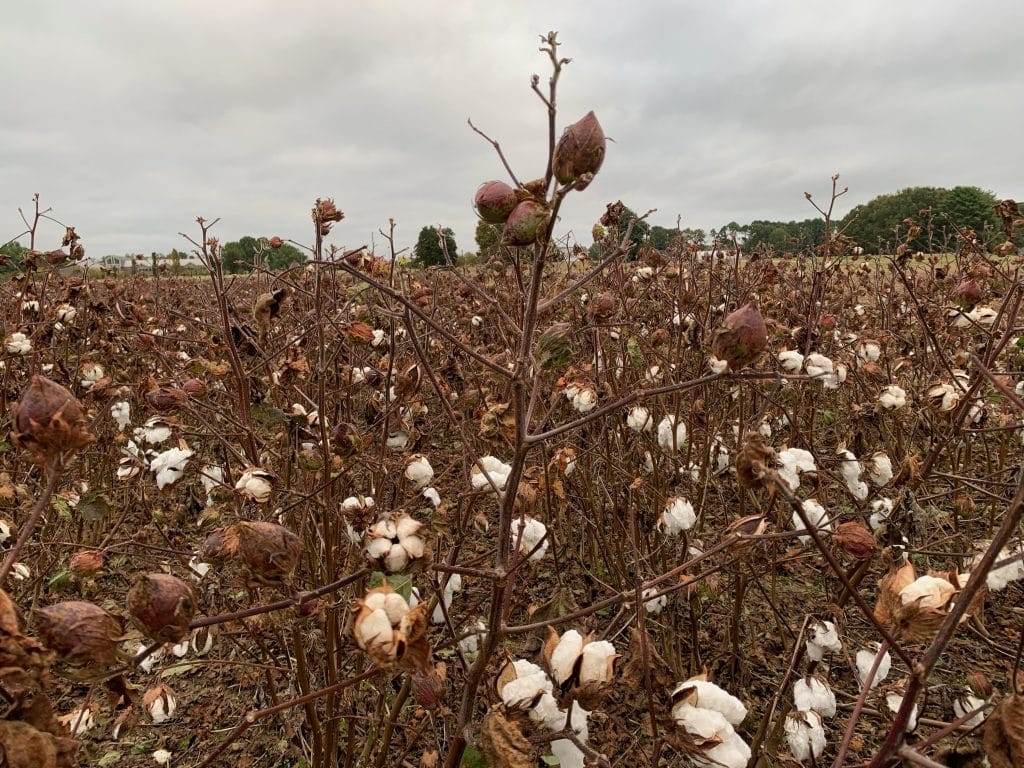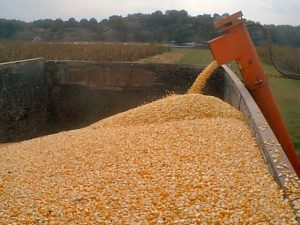 The forecast lows for Thursday/Friday/Saturday/Sunday nights have bounced around over the past few days, but this morning they included a 26, 28, 28 and 31. I’ve passed many fields with a large percentage of large bolls in the upper canopy still closed. Today (10/29) is the day to make any last-ditch effort at opening those bolls; it is likely all bolls remaining closed after this weekend will freeze shut. Continue reading
The forecast lows for Thursday/Friday/Saturday/Sunday nights have bounced around over the past few days, but this morning they included a 26, 28, 28 and 31. I’ve passed many fields with a large percentage of large bolls in the upper canopy still closed. Today (10/29) is the day to make any last-ditch effort at opening those bolls; it is likely all bolls remaining closed after this weekend will freeze shut. Continue reading
Recent Updates
Tennessee Corn Grain REC Data Now Available
 Our county corn trial numbers are still rolling in, but results are up for the small plot trials performed at the University of Tennessee AgResearch and Education Center locations. Results can be found at search.utcrops.com/corn-grains as both web tables or as a downloadable excel file. These tables will be updated with county data as soon as that is available.
Our county corn trial numbers are still rolling in, but results are up for the small plot trials performed at the University of Tennessee AgResearch and Education Center locations. Results can be found at search.utcrops.com/corn-grains as both web tables or as a downloadable excel file. These tables will be updated with county data as soon as that is available.
AgResearch and Education Center (REC) plots are 5 ft (2, 30 in rows) by 30 ft and are replicated three times per location. Total number of entries was on par with most years, totaling 89 corn hybrids, representing 14 company/brands. Continue reading
Tennessee Weekly Crop Weather Update
RAINS PROVIDE SOME RELIEF
Rains across much of the state provided much needed moisture to most farmers. These rains also brought with them cooler temperatures with many areas reporting frost. Corn, soybean, and cotton harvests continued with most farmers continuing to post favorable yields. The added soil moisture from the recent rains have helped in the emergence of early planted winter wheat. Pasture conditions improved slightly after the rains, but frost kept pastures from making any big improvement and effectively put a stop to the grazing season in many areas. There were 5.2 days suitable for field work. Topsoil moisture was rated 20 percent very short, 24 percent short, 53 percent adequate, and 3 percent surplus. Subsoil moisture was rated 22 percent very short, 34 percent short, 43 percent adequate, and 1 percent surplus. You can read the entire report here: TN Crop Weather 10_21_2019.
Soil sampling and testing
Planning to get the most out of your crop next spring? Soil testing after post-harvest is a valuable step in accomplishing this goal. While soil testing is the only practical means to adequately evaluate the nutritional needs in a field to prescribe appropriate lime and fertilizer recommendations, the reliability of soil test results depends on the quality of the sample submitted to the soil testing laboratory. Poor sampling can result in inaccurate soil test results and produce unreliable lime and fertilizer recommendations. Some helpful soil sampling information:
- Soil samples can be collected at any time, but some soil properties (soil pH, phosphorus (P), and potassium (K), for example) can vary depending on the time of sampling.
- While soil test results from University of Tennessee Soil, Plant, & Pest Center come back within 3 to 5 days, it is best to sample months ahead of planting to allow for planning and getting prices on lime or fertilizer.
- A good rule of thumb for soil sampling is to collect samples in a way that adequately represents the soil in that field. A well represented sample will consist of 10 – 20 core samples taken at the appropriate depth within a 5/10-acre grid.
- University of Tennessee Soil, Plant, & Pest Center as well as commercial soil testing laboratories in Tennessee recommend taking soil samples to a depth of 6 inches.
- The frequency of soil testing depends on cropping intensities, soil types, fertilization rate, tillage methods, and weather conditions; however, fields should be tested every two to three year to estimate the residual nutrient levels. For high-value cash crops (tobacco, vegetables, etc.) soils should be tested annually.
- Soil testing is also recommended any time a nutrient deficiency problem is suspected or at the beginning of different crop rotation system.
- Soil samples and a completed soil information sheet can be taken to your county Extension office or directly sent to University of Tennessee Soil, Plant, & Pest Center, Nashville.•
- Addition information about UT Soil, Plant & Pest Center can be obtained from your County UT Extension Offices or at https://ag.tennessee.edu/spp
After harvest – don’t forget to soil sample
After harvest is the perfect time to take soil samples not only for nutrient analysis but also to look for pathogens. You’ll never know if you have silent yield robbers lurking in the soil unless you look for them – Take the test, beat the pest!
Call of the Week: Cotton Harvest Issues
Speeding up a slow boll…managing regrowth…or avoiding it all together. Dr. Tyson Raper addresses these issues in this podcast recorded on 10/4/19. Listen.
Tennessee Crop Weather Update
WIDELY SCATTERED SHOWERS BRING LITTLE RELIEF
Widely scattered showers occurred across the state last week, but these did little to relieve extremely dry conditions. Corn and soybean harvest continued with producers continuing to report favorable yields for both corn and early crop beans. In some areas, deteriorating pasture conditions forced livestock producers to start feeding hay, leading to concerns that they may run short of hay during the winter months. Availability of water for livestock was also a concern, with some farmers having to haul in water for their herds. There were 6.1 days suitable for field work. Topsoil moisture was rated 35 percent very short, 43 percent short, and 22 percent adequate. Subsoil moisture was rated 28 percent very short, 53 percent short, and 19 percent adequate. Hay & Roughage Supplies rated 1percent very short, 13 percent short, 72 percent adequate, and 14 percent surplus. You can read the entire report here: TN Crop Weather 09_30_2019. You can also read the latest U.S. Crop Condition report here: US Crop Progress 09_30_2019.



